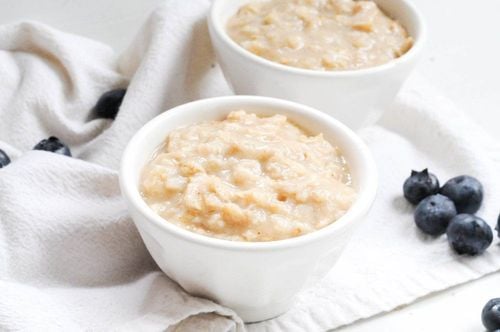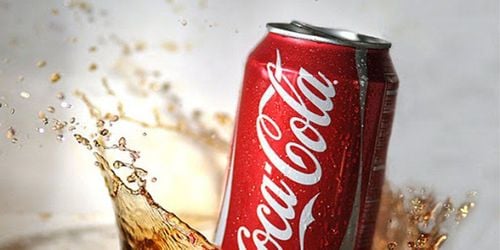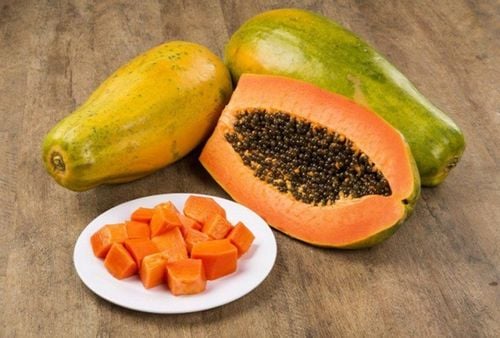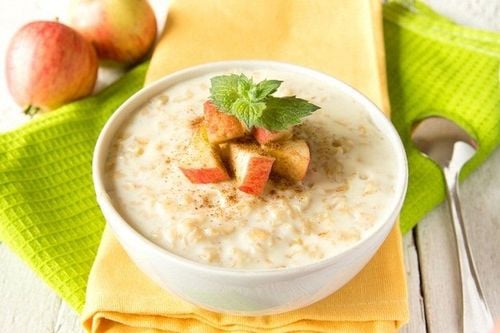This is an automatically translated article.
Most seafood is very rich in calcium, zinc, omega3, protein, ... so it is very necessary for the physical development as well as movement of the baby. However, the protein in seafood in general as well as sea fish often causes allergies in children, so it is best to give seafood to babies from 7 months onwards.
1. When can babies eat seafood?
When children enter the weaning stage (6 months after birth), many parents often wonder about when to feed their baby seafood or how many months baby can eat shrimp, fish, crab,... Usually, Because the protein in seafood in general as well as fish often causes allergies in children, it is best to give seafood to babies from 7 months onwards.
Children eat a lot of good seafood? How to eat reasonable? Accordingly, parents can give their children 1-2 seafood meals a day, but depending on the age of the month, the amount of food at each meal will be different. Specifically:
Children aged 7 - 12 months: For children at this age of weaning, parents can prepare 20 - 30g of meat for each meal of fish, shrimp with bones and shells removed to cook with flour or porridge. Children from 1 to 3 years old: Children from 1 to 3 years old should eat 1 meal of seafood cooked with porridge or eat noodles, noodles, soup... every day with about 30-40g meat of seafood. Children from 4 years old and up: If the child is 4 years old or older, they can eat 1-2 seafood meals/day with about 50-60g of seafood meat.
2. What kind of seafood should and should not be given to the baby?
There are many types of seafood, however, not any type of seafood is good for children, parents should only feed their children the following types of seafood:
For seafood, sea fish is a One of the great foods for human health because marine fish contains protein with high biological value in a balanced ratio. In addition, fish is also rich in omega-3, which is an essential nutrient for creating nerve cell membranes as well as preventing cardiovascular disease, and fish liver is also rich in vitamins A and D, so eating sea fish is very good for children. . The types of sea fish that should be eaten are salmon, mackerel, tuna, and basa. Oysters are also a very good type of seafood, so parents can add them to their baby's nutritional menu, because oysters are rich in zinc, which is essential for children's growth and development of the reproductive system. Shrimp is also a food rich in protein and calcium, so it is very good for the bone system and physical development of the baby, so from the 7th month onwards, mothers can give their babies sea shrimp or shrimps. Other shellfish such as clams, mussels and mussels are best given to babies when they are 1 year old. The way to process it is to use water to cook porridge, and minced minced meat, these seafood also contain a lot of zinc, so it is very good and important for the development of the baby. Seafood is usually high in protein, low in saturated fat, and contains omega-3 unsaturated fatty acids and other essential nutrients. Besides, seafood is also rich in minerals such as calcium, zinc, iron, copper, potassium... and rich in vitamins (especially B vitamins). Therefore, the addition of seafood to the daily nutritional menu for children will contribute to a variety of balanced diets as well as health and growth in children.
However, some types of seafood also contain risks to children's health, so parents should not feed them. The types of seafood that parents should not give their children are fish that contain very high levels of mercury and pollutants such as shark, tilefish, swordfish (sailfish) or large mackerel and tuna. big.
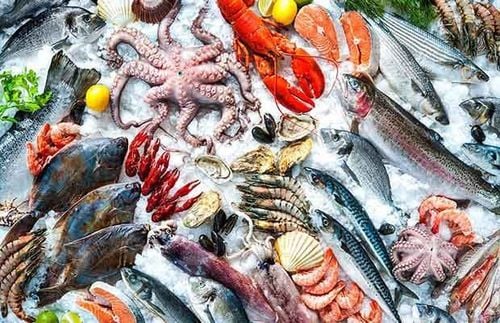
Hầu hết các loại hải sản đều rất giàu canxi, kẽm, omega3, chất đạm,... nên rất cần cho sự phát triển về thể chất cũng như vận động của bé
3. How to process seafood for babies?
Improper processing of seafood can also have adverse effects on the baby's body. If seafood is not fully cooked, it can harbor bacteria and parasites, leading to intestinal infections when babies eat seafood. In addition, the environment is increasingly polluted, so it is inevitable for children to be exposed to heavy metals such as mercury. Therefore, the most important issue when feeding children seafood is to choose fresh seafood and then process it in the following ways:
In case the child is still in the stage of eating flour and porridge, it is best for parents to puree, mince fish and shrimp to cook for the baby to eat. If it is a fish with many bones, it should be boiled and then removed the bones, and if it is a lean fish like salmon, it can be ground raw like meat and then cooked for the baby. With sea crabs, boiled, then remove the meat and grind it into small pieces to cook for babies, while large shrimps are peeled and then ground or chopped. With shellfish, parents should boil the water to cook porridge or powder. As for the meat, minced into porridge and flour When children are 3 years old or older, they can process seafood with porridge, noodles, vermicelli... or give them steamed boiled seafood such as boiled crab, Steamed crabs, boiled, steamed clams... The most important thing is to let children eat and drink boiled.
4. A few other notes when feeding children seafood
Most seafood is very rich in calcium, zinc, omega3, protein, ... so it is very necessary for the physical development as well as movement of the baby. However, when feeding your baby seafood, if you don't know how to choose, store and process seafood properly and eat it in moderation, it can lead to dangerous harm to your baby. Therefore, when feeding children seafood, parents should note a few basic things:
After eating seafood, children should not eat fruit, the cause is the nutrients found in seafood such as protein and calcium. will be greatly reduced if combined with fruits. This not only affects the absorption of calcium and protein found in seafood, but also the amount of tannin in the fruit, when combined with protein and calcium, will form insoluble calcium, thereby stimulating the digestive tract. unpleasant symptoms such as abdominal pain, nausea, vomiting. In case if there is a family history of allergies to seafood, it is best for the mother to feed the baby seafood a little later, and at the same time observe carefully to see if the baby has an allergic reaction. Absolutely do not let your baby try strange seafood, do not give them a lot of fried seafood because frying will cause the nutrient content to decrease as well as produce lipid peroxides that are harmful to the baby's health. In short, seafood brings many health benefits for babies to support their most comprehensive development. However, parents should feed their children every day, but need to practice feeding them from a little to a lot, choosing fresh seafood, properly processed to avoid food poisoning.
Please dial HOTLINE for more information or register for an appointment HERE. Download MyVinmec app to make appointments faster and to manage your bookings easily.





